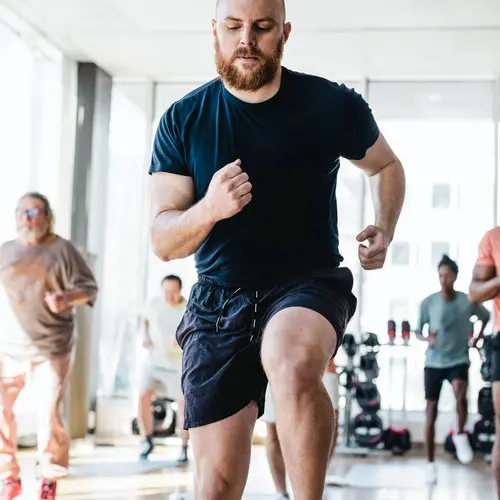Triathlons are three-sport events. Participants will usually engage in swimming, cycling, and running in sequence. There are many different formats for triathlons, like sprint, Olympic, long-distance, and Ironman. Because triathlons are so involved, often the training process can open you up to injury or fatigue. Therefore, it is essential to carefully plan out your training program to keep yourself safe while also meeting your goals. However, all of the hard work that goes into training for and competing in a triathlon can be immensely rewarding when you complete your first triathlon. Not only do triathlons push you physically, but they also push and help you grow mentally.
Starting Out
The first thing you should do is select the triathlon you want to compete in. There are several different styles of triathlon that you can choose from. To make your choice, consider what type of athlete you are and how hard you're looking to train.
Typically the different types of triathlons are:
- Ironman. This is divided into 2.4 miles of swimming, 112 miles of biking, and 26.2 miles of running.
- Half Ironman. As you may guess by the title, a half ironman is simply half of what you would do in a full ironman. It is divided into 1.2 miles of swimming, 56 miles of biking, and 13.1 miles of running.
- Olympic distance. These triathlons are divided into a .93 mile swim, a 24.8-mile bike ride, and a 6.2-mile run. This is the model of triathlon used in the summer Olympics.
- Sprint distance. Usually, around half an Olympic distance triathlon. That's a 500-700 meter swim, a 12-mile bike ride, and a 3.1-mile run.
It might be best for you to start with a sprint distance triathlon if you are starting out. Sprint distances are the best for getting a feel of how to string all of the events together.
Usually, your first triathlon is just about crossing the finish line. Later, as you build your fitness and skills, you can start to get into a more competitive tacking, increasing your speed and endurance every time you do an event.
Secondly, you should find a community or club of people who are also training for events like triathlons. There are many communities around the world that you can join. In a club, you can get the expertise of veteran triathletes, set goals, and get help staying on track with your fitness goals.
How to Train
To complete a triathlon, you do not need to have an extensive background in any one event. However, most people find that they are better at one event than the others. While it's essential you push yourself to train all of the events equally, having a strong foothold in one leg of the race will help boost your confidence and motivate you to perform better in general.
While it is always advised to have supervision or help from other, more experienced triathletes, here's a template to help you get started on training:
- Plan. Take a moment and step back. Plan your workouts ahead of time. Figure out what you want from each workout. Keep yourself and your schedule in mind. Remember: this is your plan, no one else’s. It is recommended that you alternate between activities in your training session, have one hard workout a week, plenty of rest, and incorporate some strength training. In general, mixing up your intensity and types of training has proven to be very effective.
- Review the plan. After you have finished the plan, go back over it and think about whether it is realistic, too ambitious, or perhaps has room to add some intensity.
- Start to Train. During your training, listen to your body. Before each session, check-in with yourself and ask yourself if the session you have planned is really what you need that day. Sometimes it is important to deviate from the plan to improve in certain areas or avoid injury.
Additionally, be sure to maintain proper nutrition and hydration throughout your training. Focus on diets that incorporate carbohydrates to fuel you. Recently, people have been incorporating intermittent fasting by loading up on carbohydrates and then fasting for a period of time to increase their triathlon endurance.
There are many viable diets to use in your training, but one recent trend is important to avoid: low carb, high-fat diets like the keto diet will impair your ability to train, make you feel lethargic, and lower your energy level.

